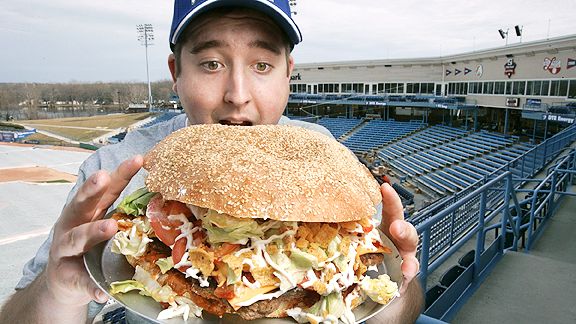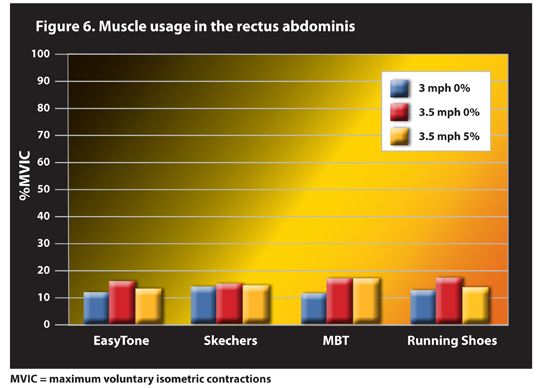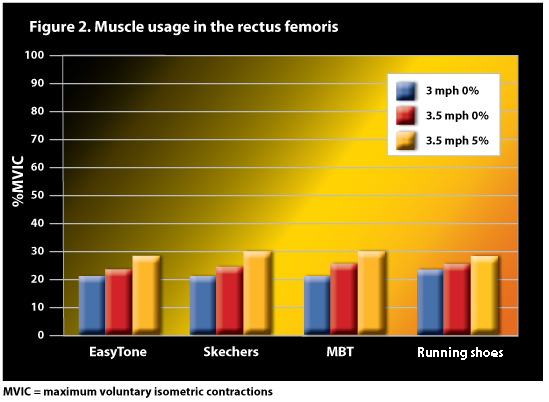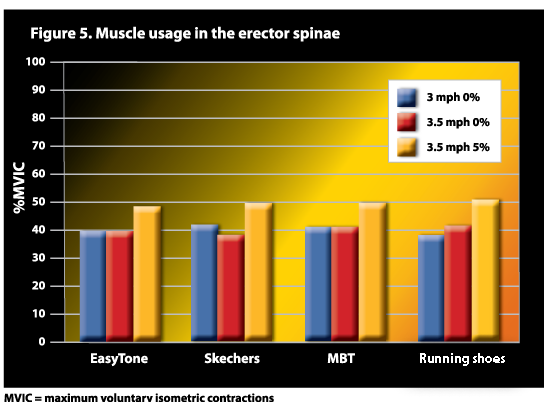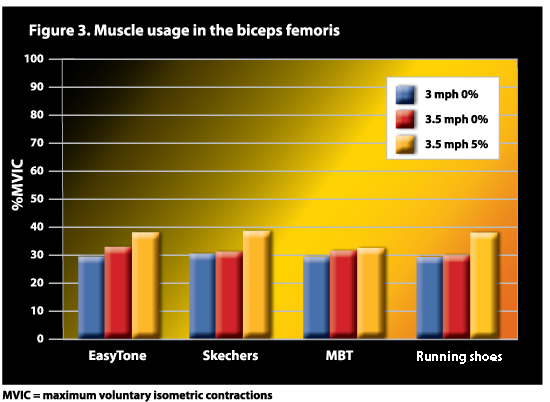- Yankee Stadium- 48% of vendors were in violation of health standards. Five hot dogs registered 91 degrees in a hot-holding unit when they were supposed to be no cooler than 140 (aka raw). Inspectors also had a vendor dump a bottle of Chivas Regal whiskey containing dead fruit flies.
- Madison Square Garden- 61% of vendors were in violation of health standards. At one stand, inspectors found "53 mouse excreta" (38 on top of a metal box underneath the cash registers in the front food-prep/service area and 15 on top of a carbonated-beverage dispensing unit.)
- Sun Life Stadium- 93% of vendors were in violation of health standards. In June 2009, an employee complained anonymously that small insects and other debris were blended into frozen alcoholic beverages at a stand where equipment wasn't being cleaned. When inspectors checked, they issued a critical violation for a buildup of slime inside the frozen drinks machine.
My Twitter Feed
Jul 27, 2010
ESPN Outside The Lines Reveals Extremely Unsafe Stadium Food
Study on the Effectiveness of Toning Shoes
Have you ever seen the wacky commercials for Sketcher's "Shape-Ups" with Joe Montana. They're pretty funny, and they seem to promise a good product. Shape-Ups, and other toning shoes such as MBT's Masai Barefoot Technology and Reebok's EasyTone make claims such as:
"burn more calories, tone muscles, improve posture, reduce joint stress" and "it's the shoe proven to work your hamstrings and calves up to 11 percent harder. And tones your butt up to 28 percent more than regular sneakers just by walking."
Toning shoes function based on an unbalanced sole design, which forces the wearer to work harder to stabilize their body and balance. This theory is strikingly similar to the concept of using free weights vs. machines. Lifting free weights actually requires more force output and activates more muscles because it requires the lifter to balance and stabilize the weight, whereas with machines there is no stabilization or balance component. Regardless, I'm skeptical of any "magic exercise device" that promises extraordinary results and wanted to investigate further. Come on, shoes that are specifically designed to tone your ass and legs, reduce cellulite, improve posture, and burn extra calories? Sounds like bulls!*% to me. Luckily, my personal training organization, ACE, recently published a study looking at the effectiveness of these shoes.
The Study:
ACE compared Shape-Ups, EasyTone, MBT, and running shoes across five criteria: muscle activation in six regions of the body (gastrocnemius-calves, rectus femoris-quads, biceps femoris-hamstrings, gluteus maximus-butt, erector spinae-spine muscles/posture, and rectus abdominis-abs), caloric expenditure, heart rate, ratings of perceived exertion (subjective evaluation of how hard you think you're working, scale from 1-10) and oxygen consumption. ACE conducted two sub-experiments, the first testing muscle activation and the second testing the other four criteria. Twelve physically active females aged 19-27 were selected for each study (24 total) and were each required to complete twelve, five-minute exercise trials. Subjects walked on a treadmill for five minutes wearing each type of shoe at random under three conditions: 3.0 mph with no incline, 3.5 mph with no incline, and 3.5mph with a 5% grade incline. Muscle activation was measured in each location using electromyography (aka electrodes).
Results:
The results from the first test revealed no statistically significant differences between the four pairs of shoes. Under each of the three exercise conditions heart rate (HR), oxygen consumption (VO2, an indicator of how hard you're working), calories burnt (kcal/min), and ratings of perceived exertion (RPE) were nearly identical across the four types of shoes.
The second test measured muscle activation based on MVIC (maximum voluntary isometric contractions). Although some individual muscle groups showed minor differences, as a whole muscle activation was identical across the four types of shoes. At times the results favored running shoes, and at times they favored different toning shoes, but none of the results were statistically significant enough to prove effectiveness.
Although the study only tested 24 subjects, the results showed virtually no differences between different types of toning shoes and running shoes. Typically toning shoes can run $100-$250. Save your money and invest it elsewhere, toning shoes aren't worth it.
If you would like to see the full study report please visit:
http://www.acefitness.org/certifiednewsarticle/720/will-toning-shoes-really-give-you-a-better-body/?utm_source=Certified%2BNews&utm_medium=email&utm_term=July%2B2010&utm_campaign=Certified%2BNews&CMP=EMC-CertifiedNews_0710#
"burn more calories, tone muscles, improve posture, reduce joint stress" and "it's the shoe proven to work your hamstrings and calves up to 11 percent harder. And tones your butt up to 28 percent more than regular sneakers just by walking."
Toning shoes function based on an unbalanced sole design, which forces the wearer to work harder to stabilize their body and balance. This theory is strikingly similar to the concept of using free weights vs. machines. Lifting free weights actually requires more force output and activates more muscles because it requires the lifter to balance and stabilize the weight, whereas with machines there is no stabilization or balance component. Regardless, I'm skeptical of any "magic exercise device" that promises extraordinary results and wanted to investigate further. Come on, shoes that are specifically designed to tone your ass and legs, reduce cellulite, improve posture, and burn extra calories? Sounds like bulls!*% to me. Luckily, my personal training organization, ACE, recently published a study looking at the effectiveness of these shoes.
The Study:
ACE compared Shape-Ups, EasyTone, MBT, and running shoes across five criteria: muscle activation in six regions of the body (gastrocnemius-calves, rectus femoris-quads, biceps femoris-hamstrings, gluteus maximus-butt, erector spinae-spine muscles/posture, and rectus abdominis-abs), caloric expenditure, heart rate, ratings of perceived exertion (subjective evaluation of how hard you think you're working, scale from 1-10) and oxygen consumption. ACE conducted two sub-experiments, the first testing muscle activation and the second testing the other four criteria. Twelve physically active females aged 19-27 were selected for each study (24 total) and were each required to complete twelve, five-minute exercise trials. Subjects walked on a treadmill for five minutes wearing each type of shoe at random under three conditions: 3.0 mph with no incline, 3.5 mph with no incline, and 3.5mph with a 5% grade incline. Muscle activation was measured in each location using electromyography (aka electrodes).
Results:
The second test measured muscle activation based on MVIC (maximum voluntary isometric contractions). Although some individual muscle groups showed minor differences, as a whole muscle activation was identical across the four types of shoes. At times the results favored running shoes, and at times they favored different toning shoes, but none of the results were statistically significant enough to prove effectiveness.
Although the study only tested 24 subjects, the results showed virtually no differences between different types of toning shoes and running shoes. Typically toning shoes can run $100-$250. Save your money and invest it elsewhere, toning shoes aren't worth it.
If you would like to see the full study report please visit:
http://www.acefitness.org/certifiednewsarticle/720/will-toning-shoes-really-give-you-a-better-body/?utm_source=Certified%2BNews&utm_medium=email&utm_term=July%2B2010&utm_campaign=Certified%2BNews&CMP=EMC-CertifiedNews_0710#
Jul 21, 2010
Supercharge Your Day With Orange Juice for Breakfast
First a little chemistry. Orange Juice, and all fruit/fruit-derived products, is a carbohydrate that primarily breaks down into fructose when digested in the body (a type of monosaccharide sugar). All other carbs are broken down into a combination of glucose and other types of sugar (lactose, sucrose, maltose, etc.). When carbs are broken down in the bloodstream they get shuttled by insulin into either a) muscle cells or b) fat cells or c) the liver and are eventually stored in the body as substance known as glycogen. Stored glycogen acts as one of the body's sources of energy for exercise, brainpower, and pretty much everything else you do.
Here's the interesting part. Research has shown that when you eat fructose it tends to replace and fill up glycogen stores in the liver, as opposed to glycogen stores in the muscles or fat. This is critical because the brain derives the majority of its energy supply from glycogen stored in the liver, which is especially low in the morning after not eating/drinking at all during a long sleep session. When you sleep you're essentially fasting for a prolonged period of time--think of how hungry you'd be after 7, 8, or even 9 hours without food...starving. During this overnight fast the body uses up the liver's stored glycogen, and leaves it empty like a car with no gas. Empty liver glycogen stores = no mental energy, alertness, and no ability to think clearly. Not good.
The solution? Drink a glass of OJ when you wake up! Bananas, apples, berries, other fruit, and even honey (which is primarily made of fructose) are also really good options to include at breakfast (I love adding berries or a banana to my oatmeal). Eating/drinking some sort of fruit product as soon as you wake up can quickly refill the liver's glycogen stores and provide a huge surge of energy to the brain--kind of like jump starting a cars dead battery. Start enhancing your breakfast with a glass of OJ. You'll wake up, think clearer, and start the day with a sweet bang.
Jul 20, 2010
Larabars Vs. Clif Bars, What's Healthier?
Every month Men's Health magazine features a segment called "Eat This, Not That!," which puts two similar foods or beverages into a head-to-head battle royale, and compares them based on their health benefits. I love this article because it exposes an unhealthy food and simultaneously unveils the health benefits of an extremely similar alternative. These subtle differences often go unnoticed, but realistically they can make a huge difference. For example, look at Vitaminwater Zero vs. Gatorade G2. Although both are low-calorie thirst quenchers, the first is sweetened with all-natural Stevia and is loaded with B vitamins and vitamin C, while the latter is virtually all sugar. Switching to Vitaminwater Zero can have a big impact on your health and weight.
In the spirit of Men's Health I'm going to do my own "Eat This, Not That!"
The contestants? Larabars vs. Clif Bars. In our rapidly changing, fast-paced world the importance of supplements, bars, and other meal replacements has skyrocketed. The problem with the majority of these products is that they're loaded with sugar, fat, artificial sweeteners, and other crap that can reak havoc on human health. Everyone is bound to rely on bars, drinks, and supplements at some point--it's simply not practical to eat whole food at every meal. Meal replacements can be healthy in moderation, the key is finding which one's are truly good for you. They're out there, you just need to do a little searching.
"Larabar vs. Clif Bar"
Go with Larabars. Stick to Larabars during your every day life--they're extremely healthy, can help curb appetite, and best of all they're delicious! Clif Bars have their place immediately before or after, or during a workout, but nowhere else in the diet.
In the spirit of Men's Health I'm going to do my own "Eat This, Not That!"
The contestants? Larabars vs. Clif Bars. In our rapidly changing, fast-paced world the importance of supplements, bars, and other meal replacements has skyrocketed. The problem with the majority of these products is that they're loaded with sugar, fat, artificial sweeteners, and other crap that can reak havoc on human health. Everyone is bound to rely on bars, drinks, and supplements at some point--it's simply not practical to eat whole food at every meal. Meal replacements can be healthy in moderation, the key is finding which one's are truly good for you. They're out there, you just need to do a little searching.
"Larabar vs. Clif Bar"
What the hell is a Larabar? Larabars are all-natural bars made from a combination of unsweetened fruits, nuts, and spices--and nothing more. Larabars are made from 100% whole foods, and contain no added sugar, preservatives, or artificial flavors. Each bar has no more than 8 ingredients. Another plus is that they're suitable for any lifestyle; they're gluten free, dairy free, soy free, kosher, vegan, and non-gmo (genetically modified). They're the gold standard of the pre-packaged food market.
What about Clif Bars? Clif Bars are high performance energy bars designed for long lasting performance in athletic events, specifically cycling, climbing, and other outdoor endurance sports. They're made from whole, all-natural, organic ingredients, and contain over 20 vitamins & minerals.
Overall Grades
Categories | Larabar | Clif Bar |
Health, Satiety | X | |
Performance/Energy | X | |
Taste | X | |
Flavors | X | |
Consistency | X | |
Cost | X | X |
- Health - Larabar
- Larabar, 9/10. What's not to love about the Larabar? The only ingredients in the apple pie version are dates, almonds, unsweetened apples, walnuts, raisins, and cinnamon. There are no artificial sweeteners, added sugar, preservatives, chemicals..NOTHING!! The energy provided is 100% all-natural, straight from real food. Larabars are loaded with heart-healthy mono and polyunsaturated fats, 4g of protein, as well as 5g of dietary fiber. Although the sugar content is fairly high, it's derived from unsweetened apples. Larabars also contain a nice blend of vitamins and minerals, including potassium, iron, thiamin, riboflavin, folic acid, phosphorous, magnesium, zinc, and copper. For only 190 calories Larabars are incredibly filling and can help control blood sugar levels.
- Clif Bar, 5/10: Although Clif Bars are marketed as a health food, realistically they're closer to a candy bar with a health kick. On the positive side they're made from whole, organic ingredients, have high fiber content, and have a plethora of vitamins and minerals. That sounds really nutritious, but when you dig a little deeper you start to figure out where Clif went wrong. Take a look at the ingredient list:
- (Organic Brown Rice Syrup, ClifPro® (Soy Rice Crisps [Soy Protein Isolate, Rice Flour, Barley Malt Extract], Organic Roasted Soybeans, Organic Soy Flour), Walnuts, Organic Rolled Oats, Organic Toasted Oats (Organic Oats, Organic Evaporated Cane Juice), Organic Diced Bananas (Organic Bananas, Organic Rice Flour), Organic Evaporated Cane Juice, Chocolate Chips (Evaporated Cane Juice, Unsweetened Chocolate, Cocoa Butter, Soy Lecithin, Natural Flavors), ClifCrunch® (Organic Oat Fiber, Inulin [Chicory Extract], Organic Milled Flaxseed, Organic Oat Bran, Psyllium), Organic Banana Powder, Organic Soy Butter, Organic Date Paste, Natural Flavors, Sea Salt, Cinnamon.)
- There are over 30 ingredients, most of which are sugar, sugar, and more sugar! Compare that to Larabars which are made from only 3-8 ingredients and have zero added sugar. The first ingredient is sugar (which means that sugar is the primary ingredient), there are at least three references to organic evaporated cane juice (sugar), and it's even topped off with chocolate chips. Although some of the ingredients are healthy on their own, the entire concoction has far too much added sugar and soy, which is anything BUT a health food. Soy is GMO, pumped with hormones, has been shown to increase estrogen levels, inhibits the body's uptake of nutrients, and in some cases is loaded with toxic metals left behind in the manufacturing process. 240 calories is fairly high for a bar that is not all that filling.
- Performance/Energy - Clif Bar
- Larabar, 6.5/10. Larabars are a good source of sustained energy that can help bridge the gap between meals or prep for an endurance sporting event. They're great for curbing appetite. The one drawback is that they're not great for sports performance during or post-exercise.
- Clif Bar, 9/10. Clif Bar's blend of sugar, complex carbs, and protein is a great combination before, after, or during exercise. Eating a Clif Bar before/during a long run, bike ride, or whatever else is a great way to get a quick surge of energy to power you through whatever fatigue you're facing.
- Taste - Larabar
- Larabar, 9/10. Larabars consistently taste great across all of the flavors. I've enjoyed every single one I've tried. For only having 3-8 ingredients they taste remarkably similar to the flavor they're advertised as. I love the banana bread, cashew crunch, peanut butter cookie, and key lime pie. I'm thoroughly impressed.
- Clif Bar, 5/10. In my experience Clif Bars are completely hit or miss. Some of the flavors are so nasty that I can't even finish half the bar, while some of them are somewhat decent. They taste too fake and too sweet. I prefer the taste of a Larabar to any of the Clif flavors.
- Flavors - Clif Bar
- Larabar, 8.5/10. Larabar has 19 flavors including PB & J, Apple Pie, Coconut Cream Pie, Key Lime Pie, Peanut Butter Cookie, Cinnamon Roll, and more. The flavors are all based on foods that have nuts, fruit, or spices. I like the variety, but the flavors are largely traditional and not overly creative.
- Clif Bar, 10/10. The one thing I do like about Clif Bars are that they have very unique and inventive flavors. Like the Larabar, Clif Bars come in 19 varieties. Some of the flavors include: Chocolate Chip Peanut Crunch, Cool Mint Chocolate, Iced Gingerbread, Maple Nut, and Cranberry Apple Cherry. They even release seasonal flavors around the holidays.
- Consistency - Larabar
- Larabar, 8.5/10. Even though there are no preservatives, Larabars always manage to taste gooey and fresh. They're not too chewy, but chewy enough so that you don't gobble them down. At times the bars can fall a part a little bit. The bars also tend to be fairly small.
- Clif Bar, 3/10. I personally think the consistency of Clif Bars is gross. They're overly sticky and chewy, taste chalky, and easily break apart. They taste really, really fake.
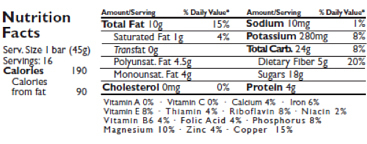 | ||
| Larabar Label (Apple Pie) |
Go with Larabars. Stick to Larabars during your every day life--they're extremely healthy, can help curb appetite, and best of all they're delicious! Clif Bars have their place immediately before or after, or during a workout, but nowhere else in the diet.
Jul 12, 2010
The Many Benefits of Weight Lifting, and Why Women Should Lift Weights Too
Before I get into the benefits of weight lifting, I want to pause and send a message to women everywhere: weight lifting is NOT just for guys. The belief that lifting weights will get a woman super-jacked, ripped, and nasty to look at is the result of misinformation and a bunch of misconceptions. The only way for women to build significant amounts of muscle is 1. steroids 2. supplement with HGH, testosterone or other illegal supplements or 3. being genetically gifted and predisposed to building large amounts of muscle, which you would already be aware of. For most women I don't think any of these apply--so start weight lifting (you'll tone up and nothing more, I promise). I hope this article can convince more women to start lifting, because those who don't are missing out on so many awesome benefits (just look at Jen!).
Now to the good stuff. Strength training, resistance training, weight lifting, or whatever you want to call it is not just about building bigger muscles...it's about so much more than that. Sure, one goal is to grow in size, but the majority of people who train religiously acknowledge that the benefits go far beyond muscular growth. Here are 18 reasons why you should incorporate strength training into your daily routine (in no particular order):
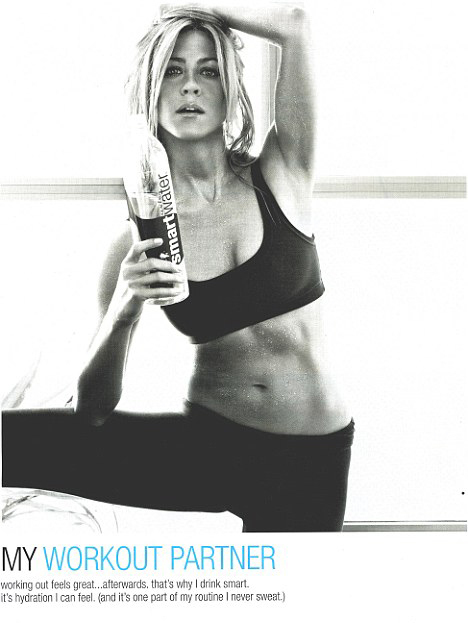 |
| Jennifer Aniston |
- Builds muscle, burns fat, tones the body, and makes your body look so much better. What else could you want from physical activity? This is the primary reason most people strength train...and for good reason. Society weighs appearance so heavily, which makes it vital to look good (just look at the cover of People or Cosmo, almost all of the time it's commenting on someones body). Not only that, but being muscular, lean, and toned screams health and strength. A healthy, strong person is an attractive person that people gravitate towards.
- Burns significant calories and boosts BMR. A high-intensity weight lifting session can burn up to 500 calories per hour. Weight lifting has also been scientifically proven to boost BMR (basal metabolic rate) for up to 24 hours post-workout. Not only are you burning calories in the gym, but also when you're sitting on the couch relaxing. The more intense the workout, the more calories you'll burn after while you're chilling out.
- Muscle burns more calories at rest than fat. The higher your muscle-to-fat ratio the higher your BMR. More muscle and less fat means that you'll burn more calories at work, on the couch, and while you're sleeping.
- Muscle is functional. Having more muscle means you're stronger and fitter, which translates to better performance in everyday lifestyle activities. You'll look a lot better to your peers when you can carry a heavy TV up a flight of stairs, powerfully spike a volleyball, or bring in a trunk-load of groceries all at once.
- EPOC. EPOC stands for excess post-exercise oxygen consumption--the measurably increased rate of oxygen intake following intense exercise, which results in more calories burned. Basically, EPOC causes the body to increase its consumption of fuel...in this case, the body's fuel is fat. In response to exercise, fat stores are broken down and free fatty acids (FFA) are released into the blood to be burned off. That's a very, very good thing.
- Halts metabolic slowdown. Weight lifting can reverse the natural decline in your metabolism which begins around age 30. Revving up your metabolism for as long as possible will help keep you in top shape and let you eat like a teenager.
- Bone strength. Strength training doesn't just apply to your muscles, but also your bones. Regular weight lifting increases bone density, which can reduce the risk of fracture and prevent the development of osteoporosis. Studies have shown that elderly adults over the age 80 who participate in weight bearing programs can significantly increase bone density over a short period of time. Exercise truly is a lifelong activity.
- KEY FOR WOMEN: This is especially important for women. Osteoporosis targets more women than men, because of the hormonal cycle. In fact, women are four times more likely than men to develop and suffer from the disease and can lose up to 20% of their bone mass from the first five to seven years following menopause.
- Improves posture. A stronger back, shoulders, neck, and core can help you stand up straight and look confident. Plus you'll look taller. Better posture also helps preserve the integrity of the spine and reduces lower back pain.
- Reduces lower back pain and injury. Strength training targeted at the back can help reduce the chance of lower back injury and pain that is common in adults. Indulge in deadlifts and rows!
- Improves blood pressure.
- Improves balance and coordination.
- Decreases the risk of adult onset diabetes.
- Creates better joint support, stronger ligaments and tendons.
- Improves cardiovascular health. Weight lifting is a great way to get the heart pumping and improve its strength. It also serves to increase HDL cholesterol (the good type), and lower your RHR (resting heart rate). A lower RHR means that the heart doesn't have to work as hard on a day-to-day basis, which ultimately allows it to keep pumping blood for many more years later in life...
- Releases endorphins. You might have learned this from Legally Blonde or from the term "runner's high," but exercise and weight-training releases neurotransmitters called endorphins (the same endorphins are released when you eat spicy food, or experience pain, excitement, or orgasm). Flooding endorphins creates analgesia (pain-killing) and a feeling of well-being and happiness. Endorphins are released during long, continuous workouts, when the intensity is moderate to high, and breathing is difficult.
- Like strength-training, acupuncture, which is used medicinally for pain-killing, relaxation, and stress reduction, stimulates the production of endorphins as well.
- Stress reduction, mood improvement. Weight lifting reduces stress, anxiety, and reduces the risk of depression. It also helps create a sense of happiness (see endorphins above). Weight lifting will literally put you in a better mood, plus you'll feel more confident.
- Mental alertness and energy levels. Weight lifting stimulates the mind, improves alertness, and provides an energy boost later in the day. Working out in the morning, if possible, is a great start to any day.
- It helps you look younger. A healthy body is a young body.
Jul 6, 2010
Alcohol & Insulin Levels
Here's more evidence that drinking alcohol in moderation can have a positive impact on human health--alcohol may improve insulin sensitivity. After studying mice that were fed either water or ethanol, researchers found that alcohol consumption improved insulin sensitivity compared with the control group. Insulin sensitivity is a protective factor against insulin resistance.
Insulin resistance means your cells have become less sensitive to the effects of insulin, the hormone secreted by the pancreatic gland which helps glucose (from food) to enter cells where it is turned into energy. Insulin resistance causes the pancreas to over-compensate by working harder and releasing even more insulin. By improving insulin sensitivity your body has to release less insulin to control blood sugar levels, thus not working as hard.
Subscribe to:
Posts (Atom)

